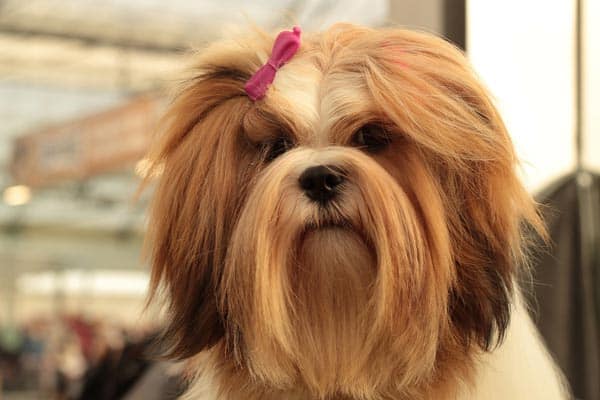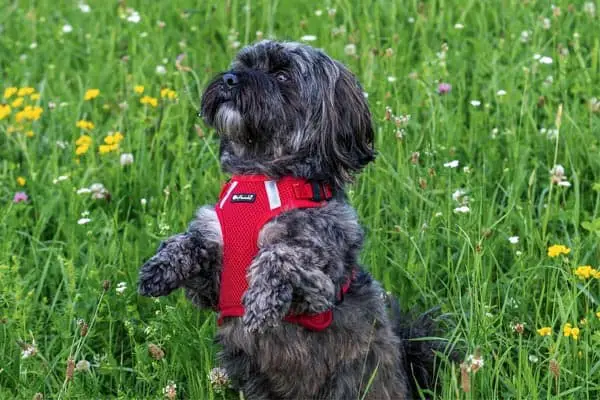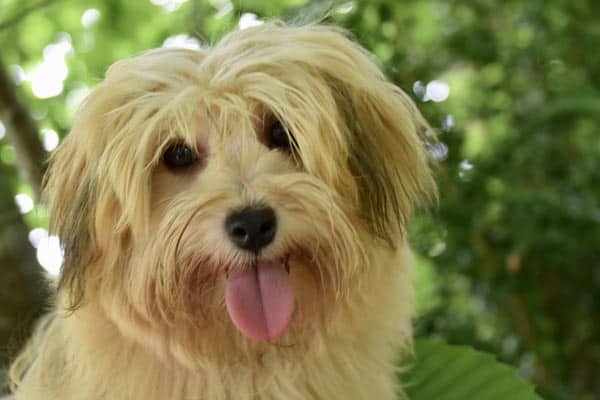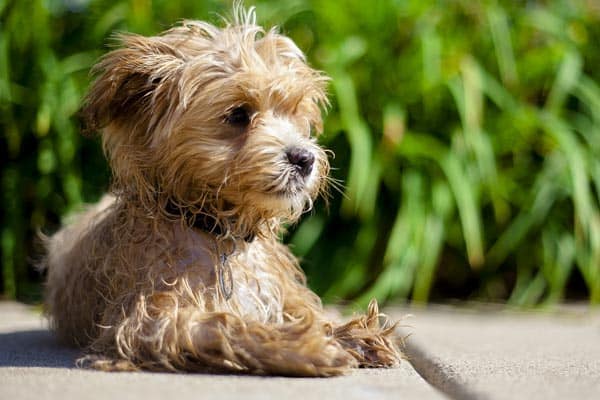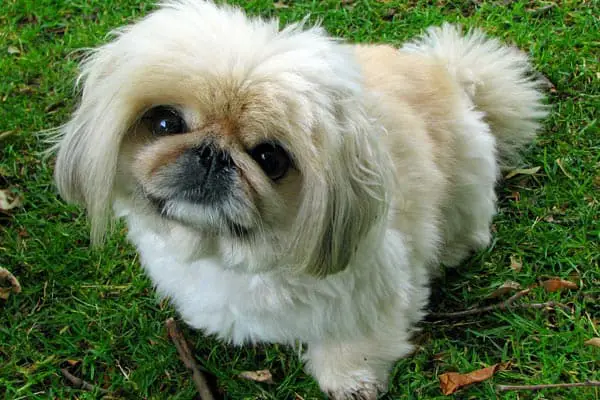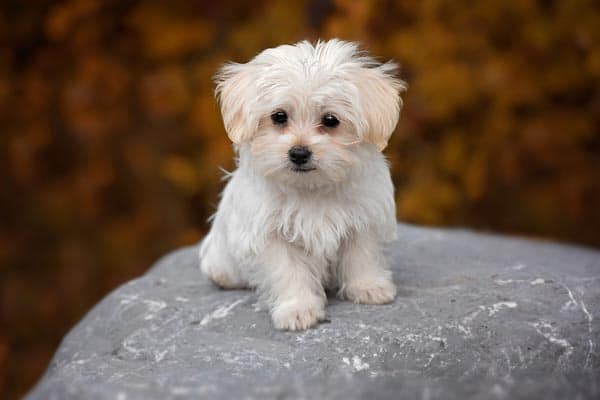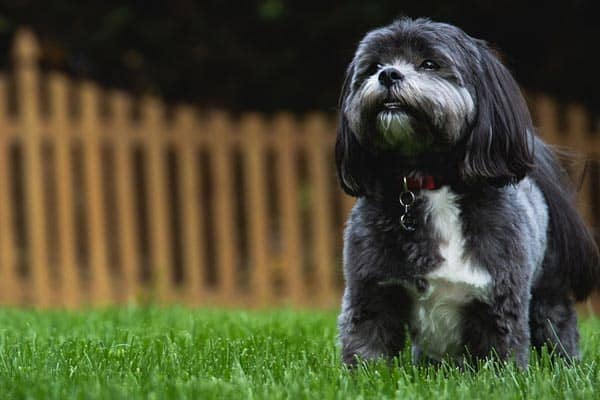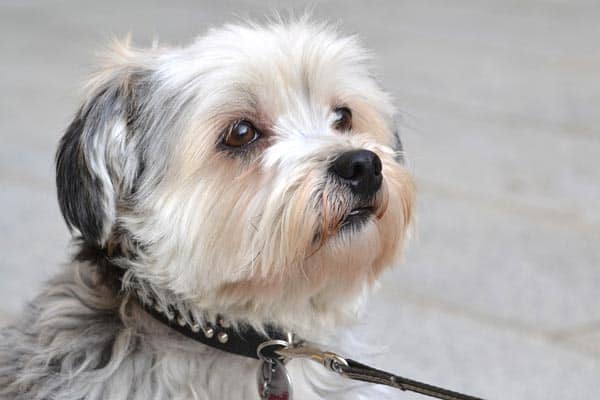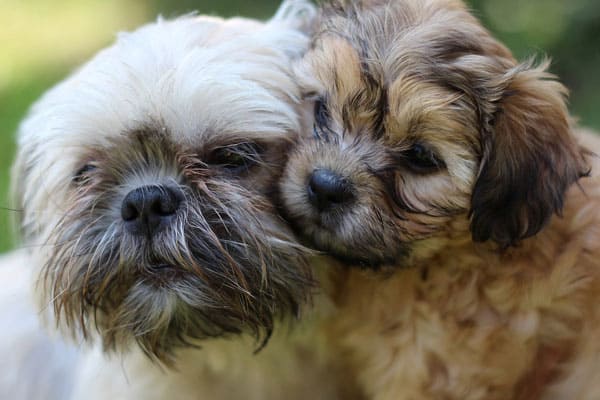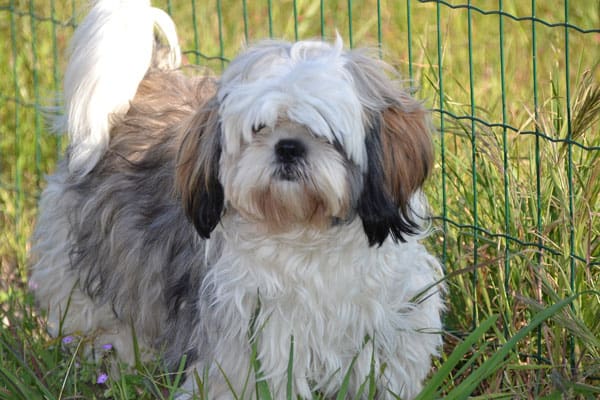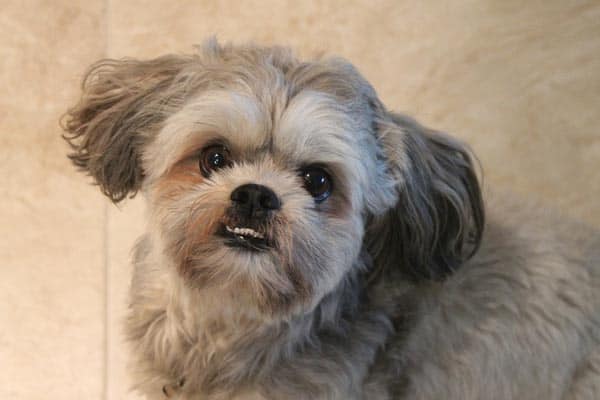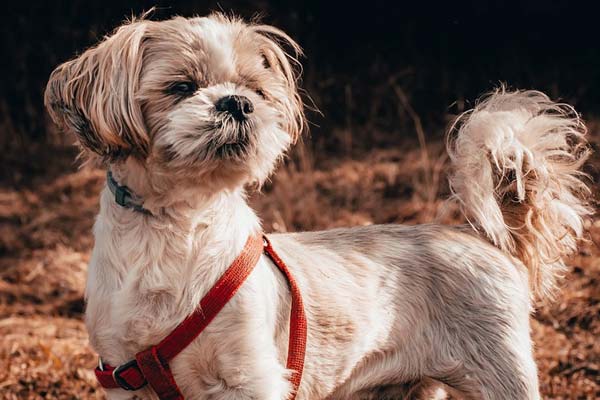7 Dogs that Look Like Shih Tzu: Mirror Images, Copycats, and Near Misses
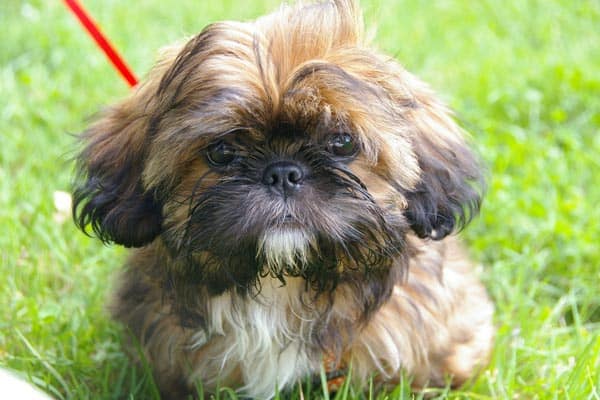
“Oh geez, all those little dogs look the same.” That is what those of us who do not own Shih Tzus or see them every day think. Of course, not all small breeds look identical.
However, several breeds look a lot like Shi Tzus, especially when you consider the recent trend to add more colors. Do not despair, though, because there are some surefire tips to differentiate confusing breeds.
Perhaps among the most famous dogs that look like Shih Tzu are Lhasa Apsos. Other near look-alikes are the Havanese, Russian Svetnaya Balonka, Shichon, and Maltipoo.
Several dogs are similar in stature and temperament to the Shih Tzu but do not look much like it. Still, another group of dogs looks similar to Shih Tzus, but you can easily tell them apart.
However, by looking at size, coat texture and color possibilities, and physical features, you will soon be able to pick out a Shih Tzu from a class of any small or Toy breed.
What makes a Shih Tzu?
The history, breed standard, coat, and colors are what make the Shih Tzu stand apart from others and contribute to its similarities with certain dogs.
Brief Backdrop
Although China often receives credit for developing the Shih Tzu, its ancestors originated in Tibet.
Part of the Shih Tzu’s ancestry likely involved none other than the Lhasa Apso. China then crossed these squat little dogs with the Pekingese and perhaps Pug, possibly to dwarf their features and make them more appealing to the Royalty who coveted them as pampered pets.
Shih Tzus came into their own palace watchdogs by the 1630s. However, they blossomed under the rule of the Dowager Empress Tzu Hsi who cherished the breed. The Shih Tzu flourished from the 1860s to about 1908.
As with many breeds, the Shih Tzu almost died out, in this case from the death of the empress and not wartimes. Revival of the breed was based on seven prime individuals of each gender, and an official breed standard came out in 1938.
Shih Tzu Breed Standard
We will discuss how other breeds deviate from Shih Tzu’s breed standard to aid you in making tough distinctions.
Size
The Shih Tzu is a small dog in the Toy category. Both sexes are similar in size, ranging from eight to eleven inches tall and weighing nine to sixteen pounds. However, the AKC prefers narrower height restrictions between nine and ten and a half inches.
No longer square-shaped like their ancient forefathers, a Shih Tzu should be compact and slightly longer than tall.
All official heights measure a dog at the shoulders. This is relevant because you will run across breeds where the hips are higher than the shoulders.
Males can have more substance and be a little heavier than females. You will not see sexual dimorphism (gender differences) to nearly the extent you would in many other breeds.
Head
A Shih Tzu’s head is broad and the face round. The breed has wide-spaced large eyes that should always appear to be set forward and looking straight at you.
Dogs with dilute coat colors have light-colored eyes. Otherwise, Shih Tzus have round, dark, and expressive eyes and low-set hanging ears. Their ears are large relative to their head.
A Shih Tzu is marked by a dome-shaped forehead, a definite stop, and an undershot jaw. The muzzle is short and square.
Body
Everything about the Shih Tzu should look balanced, smooth, and flowing. The breed is comprised of curves rather than angles, with the neck flowing into the shoulders and chest. The chest should not be too wide or deep and the topline is level as it meets the croup and hips.
Shih Tzus are surprisingly sturdy for their size. Assessing the body condition accurately in this breed is essential as they are prone to become overweight yet do not have an obvious waist or an abdominal tuck-up from the chest to the pelvis.
Specifications for the tail are rigid, with a generous plume over the back most desirable. A tail that is too loose or tight will detract from its maximum beauty, and show judges penalize it.
Gait
The Shih Tzu is a companion pet but moves like a working dog. Her gait should be free and smooth with plenty of drive from the hindquarters. The biggest difference is that a Shih Tzu can move with all the leisure she wants, not to be hurried or rushed along in the show ring.
Shih Tzu Coat
The Shih Tzu’s coat is its crowning glory. In its natural and well-kept state, it is long, flowing, and luxurious. This breed is one of the few dogs with a dual coat that still is considered hypoallergenic.
A majority of owners keep their dogs in body clips for easier maintenance as the coat can easily reach the ground. Teddy bear shaves and puppy clips are popular and show off the dog’s facial features to great advantage.
Show dog owners are only allowed to trim their dogs’ feet and perform a limited sanitary clip (trim hair around the anus). They brush their dogs daily as must owners who keep their Shih Tzus in a full coat.
Shih Tzu Colors
Shih Tzus can be almost any color or pattern. Solid colors are less common than dual colors. Tricolors are exceedingly rare.
Solid colors include black, red, silver, gold, and white. Dilute, black-based colors are blue, chocolate, or liver, and Isabella or lavender. Bicolor dogs are often white mixed with one of the solid colors, frequently white and gold or silver. Tricolor dogs are usually gold and black with white markings.
You can also find brindle dogs that have a light base color with dark striping. The long hair of the Shih Tzu makes the brindle pattern appear marbled.
Shih Tzu Temperament
A Shih Tzu’s desirable temperament is as well-defined as its physical form. Many times, various nuances in a dog’s disposition can differentiate it from other breeds.
Shih Tzus have always been primarily companion animals and should behave accordingly. They are friendly and trusting. Shih Tzus do not guard but are great alarmists, barking at any intrusion or anything that does not seem right.
Your Shih Tzu should also be affectionate, outgoing, fearless, loyal, playful, and jaunty. Anyone’s first impression of a Shih Tzu will be of a smart, infectious, happy, go-lucky dog. Although intelligent, Shih Tzus are not as cooperative about training as other dogs.
A few dogs that look like Shih Tzu
There are a few dogs that look so much like Shih Tzus that it may cause you to take a second look.
Lhasa Apso
It can be very difficult to tell Lhasa Apsos and Shih Tzus apart. The Lhasa Apso also originated in Tibet thousands of years ago, and many historians feel it was an important ancestor of the Shih Tzu. An outline of the most important differences follows:
- Size – 9 to 11 inches tall, 12 to 15 pounds
- Males and females are very similar in size but the latter should look feminine
- Almond-shaped eyes
- Narrower skull, no dome, moderate stop, ears higher set (above the level of the eyes)
- Muzzle straighter, slightly longer, and not square
- Feathering is big in this breed – On ears, legs, and tail
- The tail must be carried up during movement – Can drape over one side of the back or the other
- Coat – Dual, dense, harder than Shih Tzu’s
- Gait like Shih Tzu – Shi Tzu glides more, Lhasa Apso has more lift in the front
- Relatively longer in the body with a deeper chest
- Temperament – More active, feisty rather than gentle, still friendly, loyal, and fearless, can be dominant, often more obedient and trainable than the Shih Tzu
It is difficult to judge differences in the haircoat if two dogs are shaved, but you can see the other significant variations between the Lhasa and the Shih Tzu.
Russian Tsvetnaya Balonka
Russian Balonka ancestors hailed from France. Moscow and Petersburg cultivated companion dogs from these gift pets brought over by Louis XIV around the 18th century.
They belong to the Bichon family and experienced crossing with Russian local dogs and the Pekingese, Bolognese, and Bichon Frise in their development.
They look somewhat like both a Shih Tzu and a Lhasa Apso.
- Cannot be parti-colored (more than 50% white with a secondary color)
- Cannot be solid white
- Eyes round but medium-sized instead of large
- Slightly rounded skull, short muzzle, hanging low-set ears
- Tail carried over back but fully haired rather than plumed
- Topline level, back broad and strong, chest-deep
- Double-coated breed with long soft fur that has curls or strong waves
- Scissor bite preferable, the jaw may be slightly undershot
- Size – 7 to 11 inches tall, 5 to 10 pounds
Havanese
With many dog breeds, people seemed to have come up with similar ideas in different areas of the world.
The Havanese looks like the Shih Tzu but originated in Cuba. It is a member of the Bichon family with the Maltese, Bichon Frise, and others.
- Size close to Shih Tzu – 8.5 to 11.5 inches tall, 10 to 16 pounds; slightly longer than tall
- Scissor bite
- Topline angles upward slightly from shoulders to hips; also, moderate abdominal tuck-up
- Roundhead, moderate stop, large almond-shaped eyes
- Springy gait
- Rectangular muzzle slightly shorter than the skull
- Large, dark almond-shaped eyes, drop ears set at the level of cheekbone with a distinct fold
- Broad skull, rounded, moderate stop
- Tail plumed with silky hair carried forward over the back
- Coat – Dual, long, silky; can be corded in some
- Head furnishings long – For show can be in two braids starting at eye level; Shih Tzu usually should with topknot pulled back in a single tie
- Temperament – Playful, intelligent, sensitive, affectionate, gentle, exceedingly attached to their owner, can be one-person dogs
Maltipoo
A Maltipoo, or a cross between a Maltese and a Poodle, can often look much like a Shih Tzu. There are important consistent differences.
- A single coat that is soft and fluffy; long or medium and wavy or curly
- More variable size – 8 to 14 inches tall; 5 to 20 pounds
- More variable tail without the elaborate plumage of the Shih Tzu
- Similar face with forward-facing eyes but the longer muzzle
- Temperament – More trainable, need more exercise
- Longer legs, squarer body
- Color hues, especially apricot, frequently blends with a white coat; this shading is a frequent Poodle phenomenon and not seen in the Shih Tzu
A couple of breeds kind of look like a Shih Tzu
Pekingese
Like the other Chinese Toy breeds, the Pekingese is an ancient dog from at least 2,000 years ago, and only Chinese royals were permitted to have them. They were watchdogs and companions of the Imperial courts.
In a truce gone wrong, English invaders took at least five dogs when they invaded and looted the Imperial Palace and gardens of Peking and presented them to Queen Victoria in 1860.
Because of their hair, body shape, and facial structure, they look similar but not quite like the Shih Tzu.
- Compact, stocky, and muscular – Shape described as pear-like; very front-end-loaded
- Face shaped like a rectangular envelope from the front; the face is very flat
- Large skull, which is flat on top, eyes large, wide-spaced, round, prominent, and lustrously dark
- Straight topline, deep chest, narrow waist
- Front legs bowed, hind legs straight, neck short and thick
- Tail heavily fringed rather than plumed but carried over back like Shih Tzu
- Coat – Long and dense, stands off the body, undercoat dense and soft, feathering on ears, legs, and tail
- Temperament – Discerning; strangers must earn its respect before any warming up occurs; smart, regal, obstinate, affectionate
- Gait – Characteristic of Shi Tzu also, gait is unhurried but strong; however, Pekingnese has a characteristic roll in the front
- Colors – Red, multiple shades of sable, black, biscuit, multiple shades of brindle, fawn, gray, cream, white, and others
Maltese
Although its history is not known with complete certainty, many experts believe the Maltese originated in Malta off Italy. At the very least, it appears that much of its development took place on those islands. Scientists also commonly believe the Maltese is the oldest of the Bichons.
Maltese were often seen aboard trading ships where they may have kept rats under control. The Maltese ultimately became a companion dog. It can look like a small white Shih Tzu.
- The only acceptable color is white
- Smaller – 7 to 10 inches tall, 6 to 9 pounds
- A single coat of long, flat, silky, straight fur that grows continuously like human hair
- Longer narrower head that is not quite as round on top as the Shih Tzu; round dark eyes but closer together; low-set hanging ears but feathered
- Topknot like Shih Tzu but thinner hair
- Of finer bone than Shih Tzu
Is a designer dog that is part Shih Tzu cheating?
Several hybrid dogs have a Shih Tzu as one of their parents. The Shih Tzu has become a popular addition to many designer dogs; these mixed breeds look similar to the Shih Tzu by default. However, you can usually tell right off the bat that such dogs are crossbred.
Usually, the face is different as well as the coat. Many Shih Tzu mixes take on a Teddy Bear appearance with a shortened muzzle, tousled wisps of hair around the face, button-like ears, round heads, and round dark eyes.
- Shihchon – Official Teddy Bear Shih Tzu; Shih Tzu x Bichon
- Mal-Shi – Maltese x Shih Tzu
- Shihpoo – Shih Tzu x Miniature or Toy Poodle
- Shorkie – Shih Tzu x Yorkshire Terrier
- Cava Tzu – Cavalier King Charles Spaniel x Shih Tzu
- Coton Tzu – Coton de Tulear x Shih Tzu
- Shih Apso – Shih Tzu x Lhasa Apso
- Peki Tzu – Pekingese x Shih Tzu
Similar Stature and Personality as Shih Tzu, Don’t Look-Alike
When you research Shih Tzus, you will see breeds that people list as an alternative or as similar. Many of these dogs are similar in size and temperament but not much else.
- Bichon Frise
- Toy Poodle
- Yorkshire Terrier
- Shetland Sheepdog
- Cavalier King Charles Spaniel
- Coton de Tulear – Another member of the Bichon family
- Pug – Flat-faced like a Shih Tzu but short-haired and display only limited colors. Fawn is a common color in Pugs that you do not see in Shih Tzus.
Video Examples
Shih Tzu
This video shows the wide range of colors for Shih Tzus and goes over their unique traits. Note the round heads, large eyes, and slightly rectangular bodies.
Many of the players in the videos are puppies. Their abundant coats do not fully come in until they are almost a year old. You will also see that many of the adult dogs are clipped.
Lhasa Apso
Note the Lhasa Apso’s distinct mustache and beard. You will also notice how the hair is slightly less uniform in length and you can see feathering more distinctly than on a Shih Tzu.
This video is comprised of still images, but it is to better illustrate the differences in Lhasa’s coat.
A dog in a full coat makes it more difficult to see, but you can detect the subtle feathering on the legs and ears of a couple of the dogs.
Notice the more almond-shaped eyes and the set of the ears that gives the Apso a completely distinct expression from the Shih Tzu.
Finally, the tail does not look as generous as the Shih Tzu because, again, it illustrates feathering on the underside rather than a full plume.
Havanese
You can see the long face, how the ears are different in their set and size, and the spring in the step of the Havanese compared to the Shih Tzu.
Coton de Tulear
Here is a dog that advertisers often lump with Shih Tzus but do not really look like them. Similarities end at the size and the way the hair tends to grow upward from the snout.
The Coton has a much longer muzzle, a different shape to her ears, eyes, and face, and a single layer coat.
Pekingese
Finally, you have the Pekingese which is a likely ancestor of the Shih Tzu. Even in these puppies, you can compare them to the Shih Tzu pups and see that the Peke’s coats will stand out further from the body while the Shih Tzu’s lies flat.
The head and face on the Pekingese are rounders, resembling a monkey. The muzzle, however, is similar in both breeds, although the Pekingese has a flatter face.
